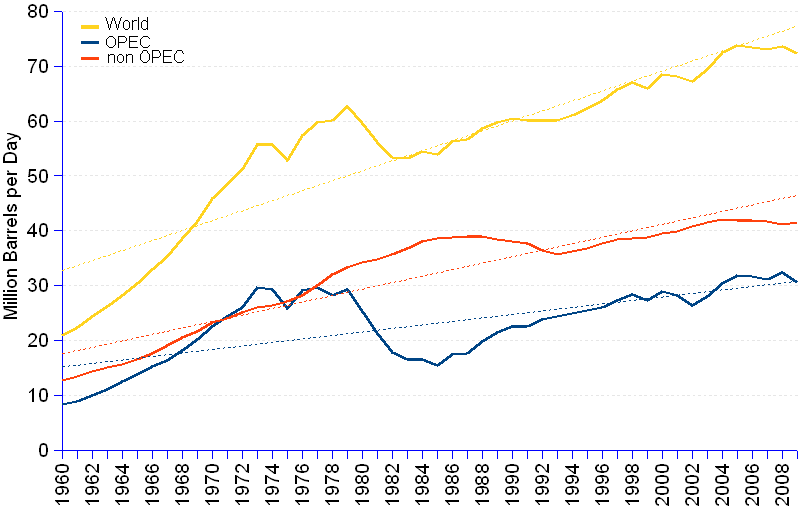

Total world crude oil production grew from 7.7 in 1960 to 26.4 billion barrels per year in 2009, at an annual average rate of 2.56%. For the same period the world gross domestic product (GDP) increased from 7.3 to 53 trillion constant 2005 US dollars, at an annual average rate of 4.14%. There is a strong correlation (correlation coefficient = 0.88) between the two variables, the variation of crude oil production being largely explained by the variation of the world GDP (Pearson statistic R² = 0.77).
These few landmarks suffice to get the unequivocal message that economic growth, a major goal in everyone's agenda especially in these dire times of financial and economic anguish, will demand a steady supply of crude oil in the foreseeable future. Should pumps, for whatever reason, stop sucking oil from the depths, neither efficiency improvements, nor energy source substitutions would be up to the task of preventing the outage of the economic machine by shortage of energy.
The relative contribution of the OPEC countries, reputedly unstable and insecure, has varied along the period. From 1971 to 1976 – the first Arab oil embargo took place in 1973 – OPEC produced more than 50%. Non OPEC producers regained their past hegemony after 1975, growing to a 71% share of world production in 1985. Since 2004 however, the gap between the two groups narrows down, providing OPEC with renewed power and influence.